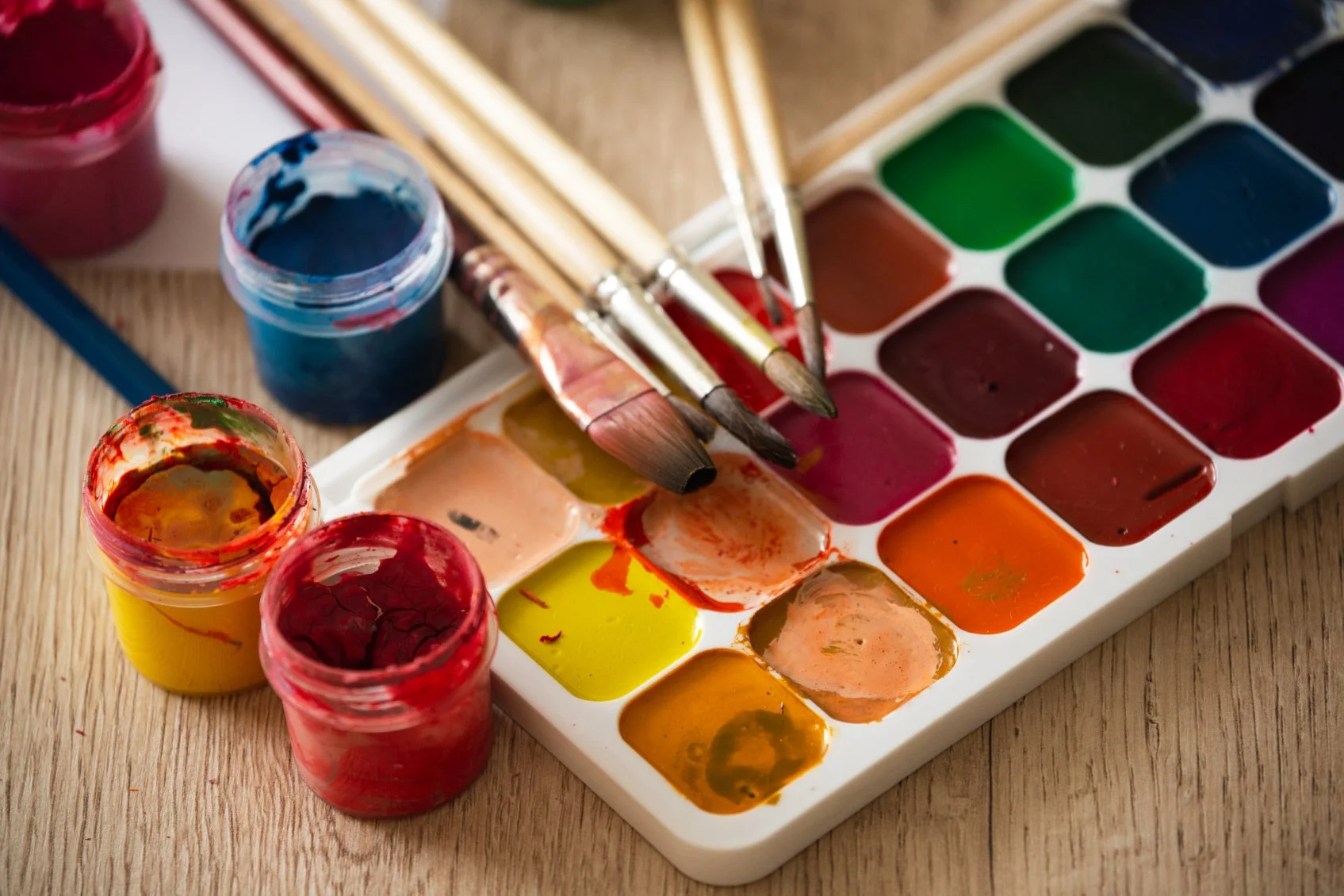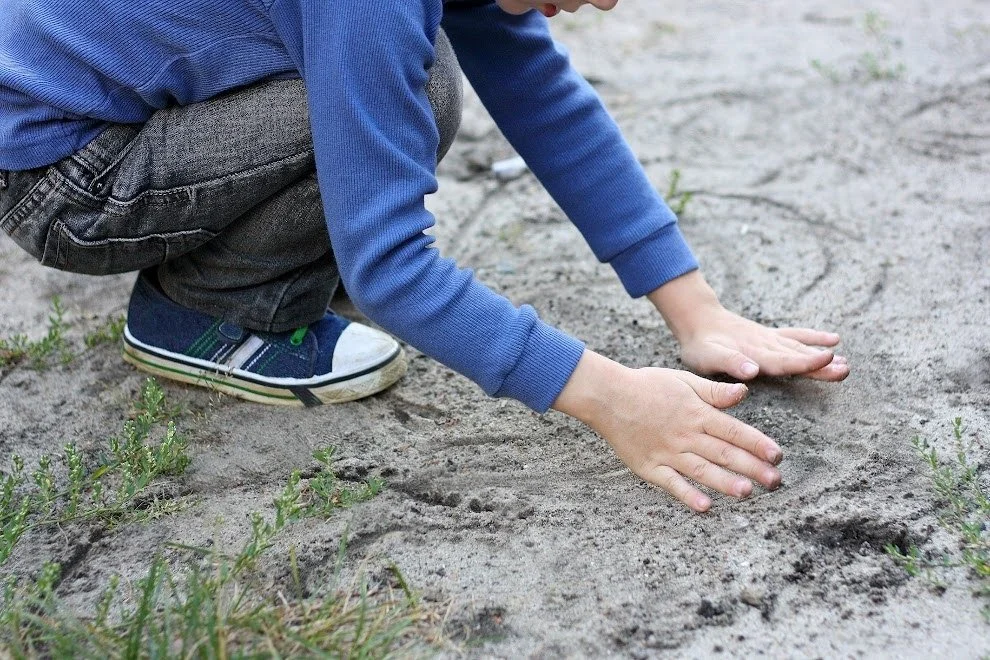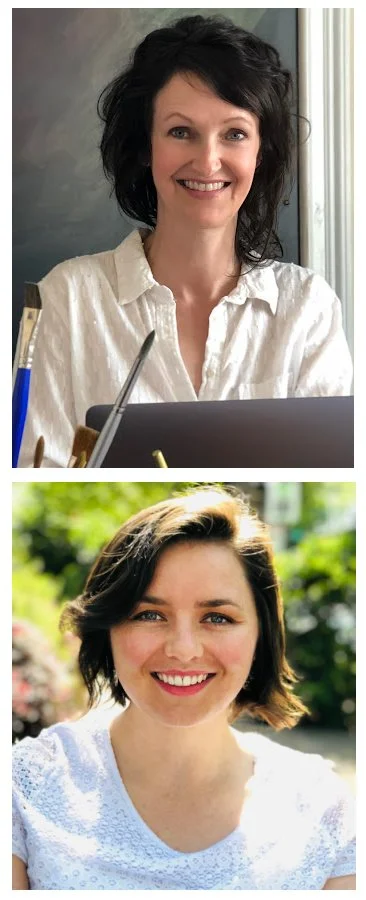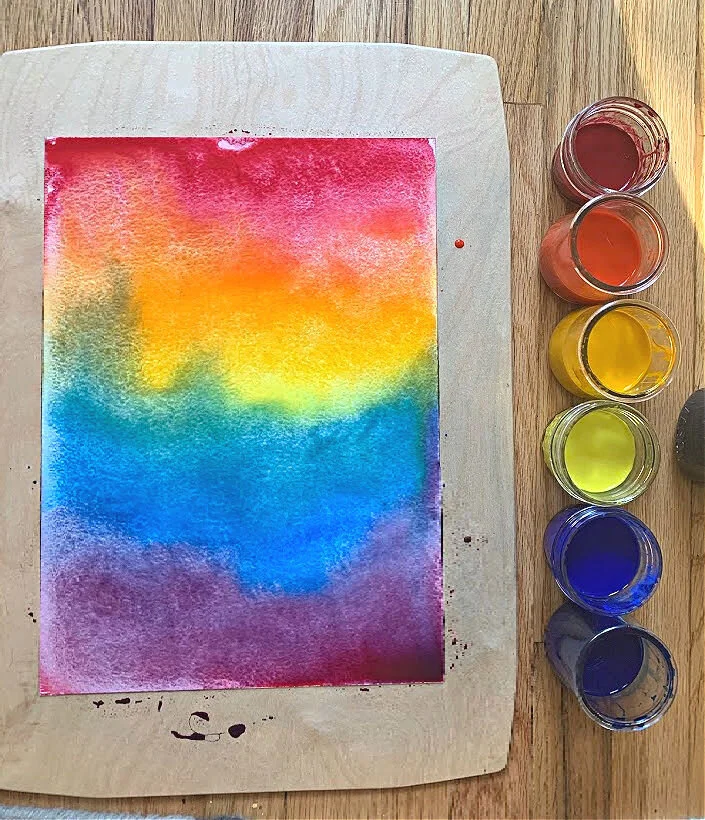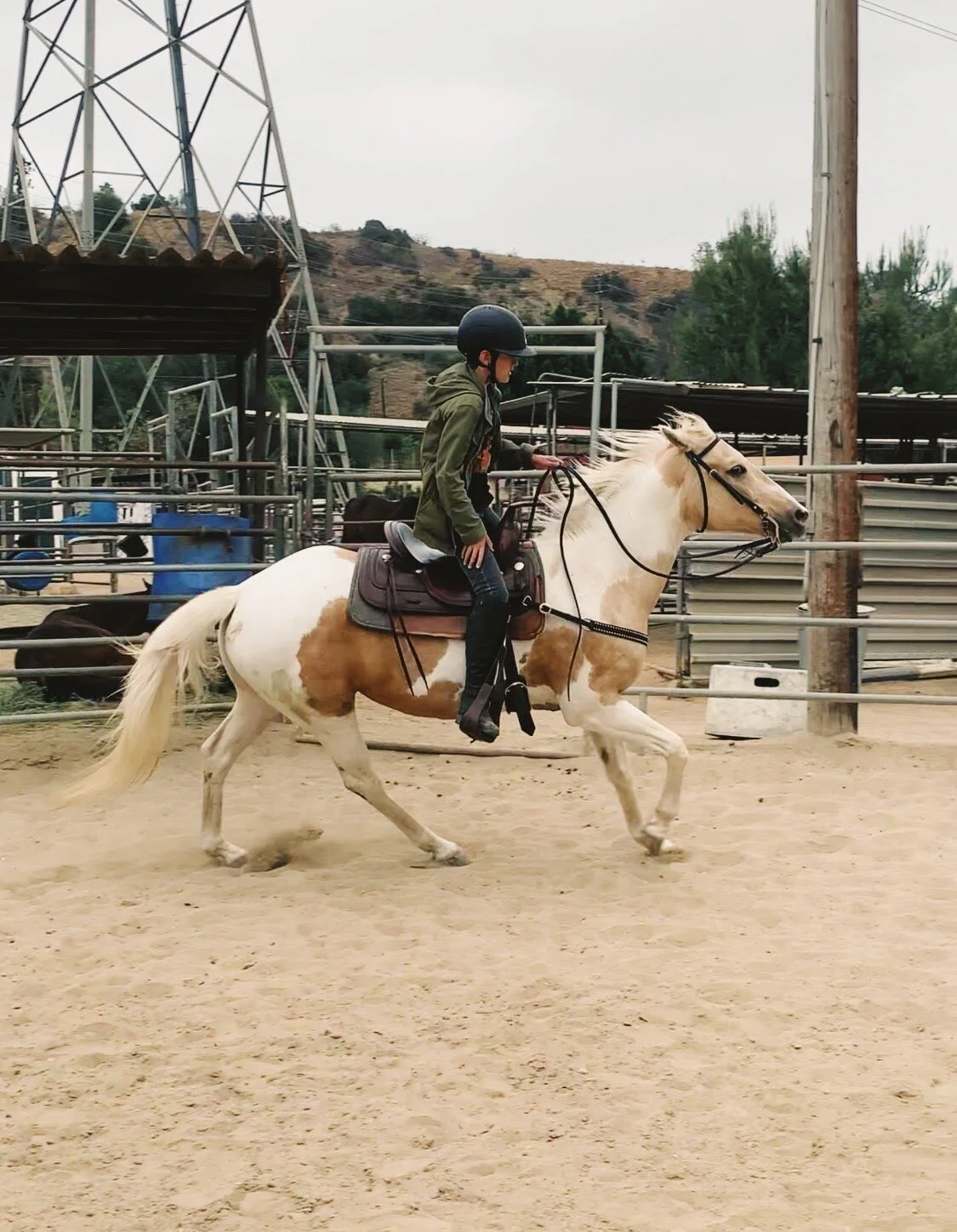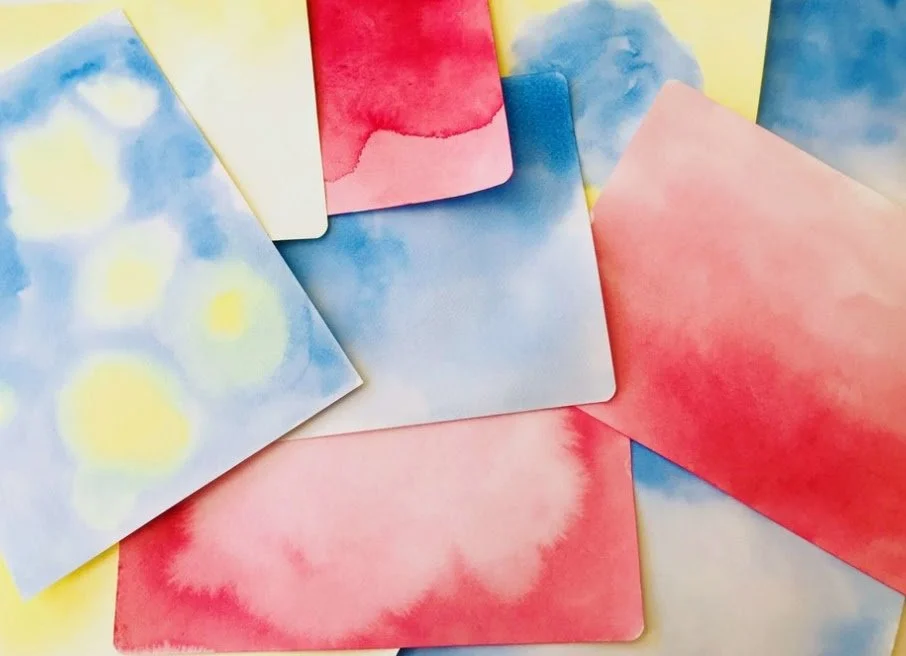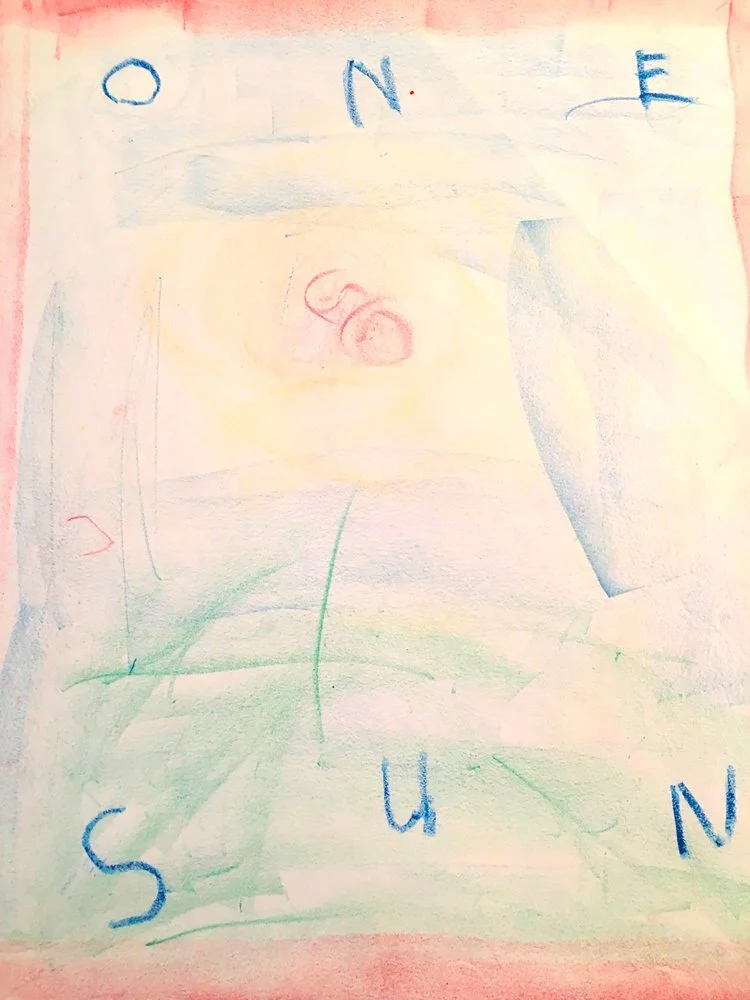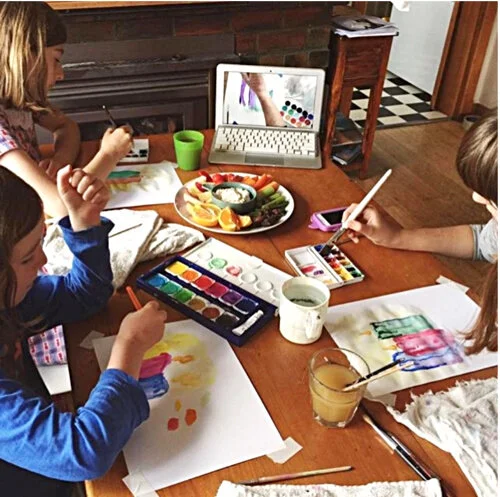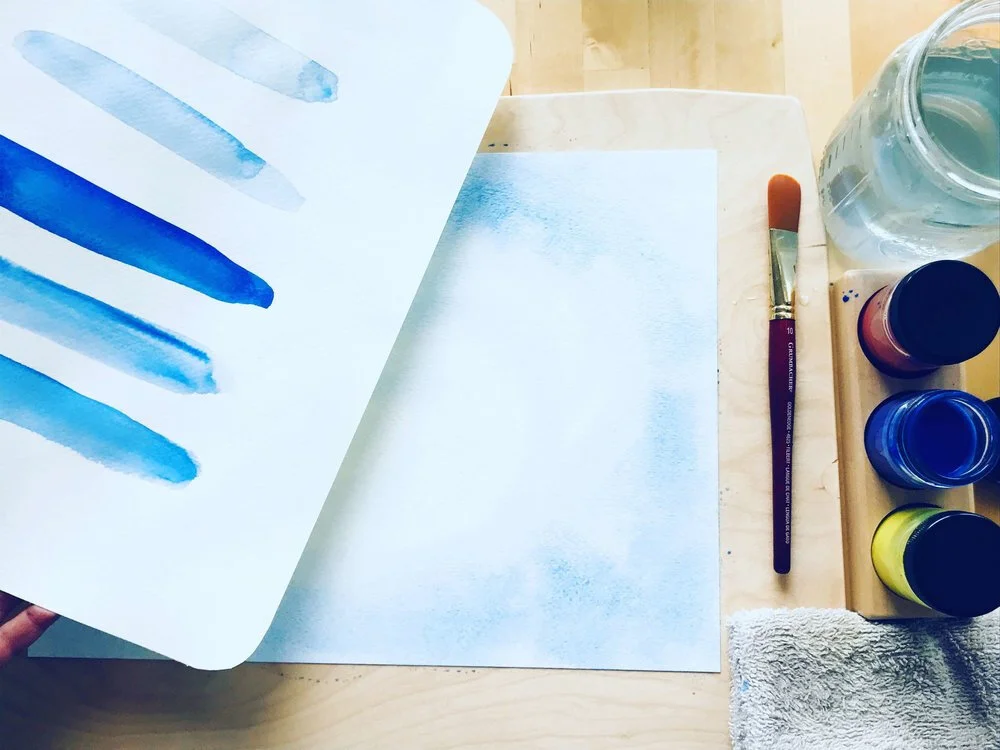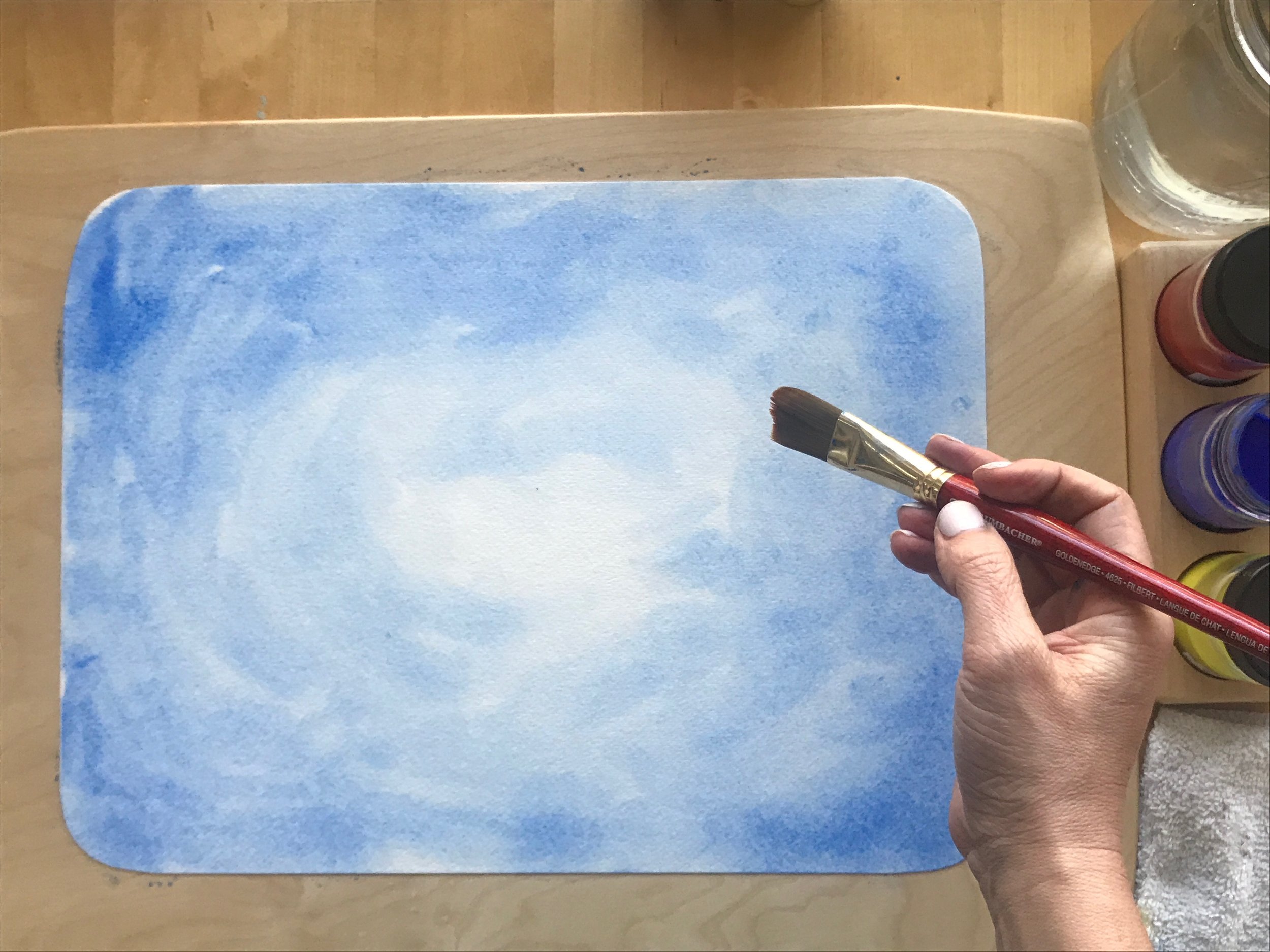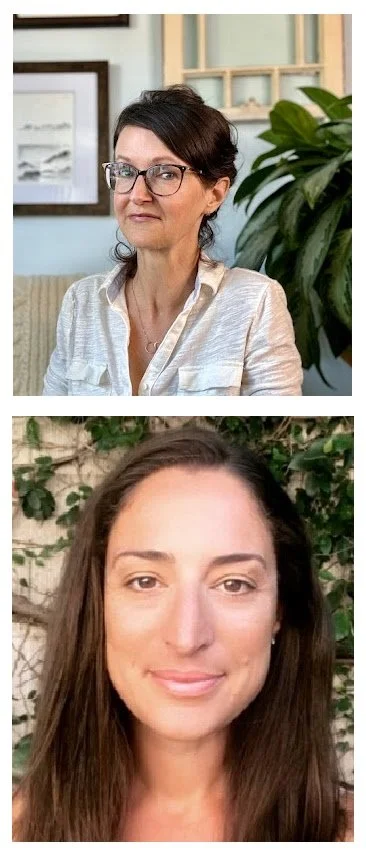
Waldorfish Blog
What is Waldorf First Grade Curriculum for Art?
Q: What is the Waldorf first grade art curriculum?
(This post is part of a series in which we answer the most common questions we receive in our inbox re: homeschooling, Waldorf curriculum/pedagogy, and whatever else comes our way! Click here to read more from the series!)
A: If you’re just getting started with your homeschooling journey, you’re probably thinking about how you’ll bring the Waldorf first grade art curriculum into your rhythm.
We’ve put together this piece as a starting place for you - we’ll be answering frequently asked questions about Waldorf art in first grade, and providing you some helpful resources to help make your artistic journey doable, meaningful, and fun!
What does the Waldorf art curriculum include in first grade?
In Waldorf education, first grade is a pivotal milestone in a child AND educator’s educational and developmental journey. Amongst the newness of the grade (from academics, to daily routine, to social dynamics) art is incorporated into nearly every aspect of the curriculum (to learn more about the role of art in education across all the grades in Waldorf curriculum, click here!)
Each family and school will vary their art curriculum, but generally, a first grader will enjoy experiences with wet-on-wet watercolor painting, form drawing, pencil and crayon drawing, and the joy of learning through storytelling.
How is chalk art used in first grade?
In Waldorf first grade classrooms, chalk art is a tool used by the educator to enliven and enhance the curriculum through pictures. The drawings change frequently, and usually relate to the subject being studied or the season at hand.
The letter “G” for goose- all in one image!
In a first grade classroom, one might observe the drawing of a goose combined with the image of a letter G (see an example to the right!) and the story of the day may be the fairy tale of the golden goose. Together, the image and the story work to enliven the language arts lesson for the children as they get to know the letter G!
At this point, chalk drawing is a medium generally used only by the educator, and one that provides endless possibilities in bringing the curriculum to life on the chalkboard. To learn more about chalk drawing and the role it plays in Waldorf education, click here.
How is Waldorf watercolor painting introduced in first grade?
A particular style of watercolor painting, often referred to as wet-on-wet painting, is practiced throughout the grades in Waldorf schools, though most often in the lower grades, 1-4. This technique of painting involves using liquid watercolor pigments on damp paper. The resulting effect is paintings that are saturated in color and unique to each artist.
Watercolor paintings from our first grade course- each is different and unique!
In grade one, the lessons are simple color experiences guided by the teacher. It is purely artistic work - there is no expectation of the children creating a specific form or picture of something. Colors are introduced slowly and individually, giving the children plenty of time to enjoy and experience the color inwardly and deeply. To learn more about the pedagogical foundations of Waldorf first grade watercolor painting, click here.
What is form drawing?
Form drawing is a practice which allows children (and adults!) to engage with space, balance, and symmetry through drawing. In first grade, form drawing starts with simple basics, as we are just introducing the child to the world around them. Form drawing also provides foundational exercises that support handwriting, pencil grip, and much more.
You’ll often see the children’s exploration of straight and curved lines hanging on the walls in Waldorf first grade classrooms. The children are guided through the practice of drawing straight and curved lines on the chalkboard, paper, in sand, even in the mud, etc. Building in a variety of layers of experience helps the child's body internalize the movements more deeply.
Though it may seem simple, what the first grade begins to discover is that straight and curved lines are in everything, building connections with their environment and natural world around them. To learn more about first grade form drawing, click here.
Form drawing can be done inside, outside, or wherever inspiration strikes!
How do I incorporate form drawing into the first grade?
Form drawing is best done as a regular practice in a child’s daily rhythm. Shorter, but regular sessions truly allow the various forms (and the process to create them!) an opportunity to deeply integrate into the child’s body and soul.
To really make something a part of your daily practice (ten to fifteen minutes per day is ideal!), put it on the calendar, follow through, and be intentional. Soon, the routine will become second nature, and you will truly reap the benefits that rhythm provides. (To learn more about Waldorf form drawing, click here!)
What is the significance of storytelling in Waldorf education?
Storytelling is an important tool in Waldorf education, especially in the lower grades! The Waldorf curriculum is rich in story, from nature stories and fairy tales, form drawing stories, through great myths and legends, to biographies and historical stories.
Oftentimes, stories are told orally, or without the use of a book or notes. It’s a way of connecting with the child, storyteller to listener, and allowing the content to come alive in a rich and organic way. When we don’t rely on the written word, the storyteller is able to tailor the story to the needs of the child. Though you may not know it, you already are a storyteller – you can get started right away with bringing stories into your regular routine! Click here to learn more!
How do I get started with Waldorf art?
First and foremost- get your supplies in order!
One of the early hurdles of getting started with Waldorf art is the question of supplies- what to buy, where to buy it, how much to spend, and how to use and care for everything! It’s easy to get caught up in buying the art supplies you think you should purchase (while spending a lot of money!) and then leaving it to collect dust on the shelf for fear of wasting it, using it incorrectly, or just not knowing how to use it.
Sound familiar?
So, start at the beginning, and get the support and resources you need right away! Our Waldorf Art for Beginners course was designed to walk you through the most commonly found artistic mediums in Waldorf education, including watercolor painting, crayon, and chalk drawing. This includes what to buy (and what not to buy!) how to care and store for everything, and then, how to use the supplies to create beautiful artwork.
Wanting to make Waldorf art a part of your weekly routine? Our Weekly Art Foundations course provides weekly lessons (enough for an entire school year!) that provides step-by-step instruction using Waldorf art techniques.
Use your resources! Head to our blog post Starting Waldorf First Grade to find all of our resources on art, storytelling, Waldorf pedagogy, and more.
Whew! Ok, it’s time to jump in and explore
Questions? You can connect with us here - we’re happy to help.
About the Authors
Robyn Beaufoy is Waldorfish’s CEO, and a course instructor for two of our courses - Waldorf Art for Beginners and Weekly Art Foundations. You’ll find her intuitive touches and influences throughout everything Waldorfish offers! Robyn has been in the world of education for almost 30 years, with an MA in Education and a certification in Waldorf teaching - she also homeschooled both of her children. In 2012 Robyn co-founded Waldorfish.com, creating it with the vision of making Waldorf inspired-art and pedagogy more accessible, joyful, and doable to homeschoolers all over the world.
Caitlin Amajor is Waldorfish’s course instructor for Geometry grades 5 & 6, and Botany, as well as our Administrative Assistant. From a young age, Caitlin has been immersed in Waldorf education, attending a Waldorf school from K-8. After receiving a BA in History, Caitlin gained her certification in Waldorf teaching, and spent seven years as a Waldorf class teacher in the upper grades. With a special fondness for watercolor painting and geometry, Caitlin loves bringing Waldorf education to her students all over the world, and seeing their own individuality and style bloom from the curriculum!
Waldorf Grade Two Painting: Coming into Form
What forms can we find in the color?
In first grade, the experience of painting becomes a formal and rhythmical experience.
Colors are introduced very slowly and purposefully; each is given a personality and mood. The unfolding of color in this way allows the children to build a connection to each as individuals. In the Grade One painting course, the colors carmine red, lemon yellow, and ultramarine are introduced and worked with through the use of verse and song. (To learn more about first grade painting and the philosophy behind it, click here!)
“Forms by themselves are of course stationary; they are motionless and stay where they are. But the moment the form has color the inner movement of the color sets the form in motion and the world’s ripples, spiritual ripples, pass through it. If you color a form you immediately give it a soul quality of a universal kind, because the color belongs to more than just the form...”
How does watercolor painting evolve with the growing second grader?
At this age, it is important to keep in the mind the child as they are now.
They are very much living in the innocence of early childhood and beginning to move away from it as they grow. First graders view the world in their wholeness and purity, while the growing second grader has a new capacity to see human nature in duality- the higher nature of humans, and the less virtuous parts of us as well.
Beautiful mountains in simple colors!
As the second grader views the world through a new lens, story becomes the main tool the teacher (whether they are in the classroom or at home) uses to introduce and build connection with color. With the stories of Noble People, animals, and fables, the teacher is meeting the child where they are, showing them the different aspects of how human beings can live and influence the world in which we live. These stories are examples of how humans can choose to act in their higher nature, and not live in the more “animal” nature of mischievous or dark aspects of the human being.
“...The color the individual form is given links it up with its surroundings; in fact it links it altogether in the world. You could say that when you color a form you should feel that what you are doing to the form is ensouling it. You are breathing soul into dead form when you give it color.
-Rudolf Steiner”
At this age, children still have rich and active imaginations, and with story and verse, the essence of colors are introduced, allowing the children to forge a connection with the color on a deep level. Carmine red is strong and fiery, golden yellow is warm, and stronger than the lemon yellow, and prussian blue has a new and more individual quality than the ultramarine, especially when it meets another color on the page.
Beautiful tulips from our second grade painting course.
The meeting of these new secondary colors is a new and essential experience for the second grader.
The children view not only how colors are as they stand alone, but how they are as they meet. How do they relate to each other? To their peers? What combinations create something beautiful or murky? Here again holds the theme of duality that the second grader is beginning to experience within themselves and observing in the world around them.
With duality, the second grader begins to paint forms- landscapes, the ocean, sunrises and sunsets, streams, and more. Through painting, the world comes into form, for example, the shades of blue become the waves of the ocean, the yellows form into happy flowers, and the reds flames of fire. As the child forms, and views the world, so does their experience in painting class.
Are you interested in bringing watercolor painting to your (home)school curriculum? Check out our Grade One and Grade Two painting courses! Our amazing instructor Amanda Mercer has created online courses that provide everything you need to make weekly painting lessons a doable, fun, and meaningful experience.
About the Author
Amanda Ziadeh Mercer is a dynamic Waldorf Teacher! She has had the pleasure of working with children in varying stages of development, ranging from infants in Parent-Child programs to the more mature students of the eighth grade. This wide range of experiences has gifted her a full picture of the developmental stages of childhood.
More from Waldorfish:
Starting Waldorf First Grade
Let’s talk all things first grade!
In Waldorf education, there is so much emphasis placed on the transition from kindergarten to first grade, and in many ways, it’s for good reason! The child is ready to transition into the grades, and with that comes a need to approach things a little differently: structure, routine, storytelling, academics, art, and everything in between!
Feeling a little overwhelmed already at how to do it all, and keep yourself sane? We can help.
First, take a nice, deep breath.
Know that you don’t have to do ALL. THE. THINGS. to make a Waldorf grade one curriculum work for you and your child! (And if you’re totally new to homeschooling, click here!)
Start here with our resources and courses; they provide a wealth of information, guidance, and content to support your first grade planning! You’re not alone in this, we promise :)
Let’s get started!
Let’s start at the beginning: what is first grade art curriculum? What kind of artistic experience will the children enjoy in first grade, and what role does the educator play in creating a beautiful and supportive learning space?
We’ve put together this piece as a starting place for you - we’ll be answering frequently asked questions about Waldorf art in first grade, and providing you some helpful resources to help make your artistic journey doable, meaningful, and fun!
Painting with your first grade child can be a truly rewarding and enriching experience, and it’s easy to get started! Amanda Mercer (our amazing course creator!) and Robyn Wolfe (Waldorfish All-Things Creator) have written a piece that walks one through the “whys” of first grade painting; it’s all about creating a meaningful experience (while keeping it simple, - and who doesn’t love that?!)
“Painting lessons create opportunities for students to develop an intimate understanding of the colors through their imaginations, movement, and imitation. When the teacher brings the lessons in partnership with short verses and stories...the children live into each experience fully. ”
First grade form drawing can be incorporated seamlessly into your weekly curriculum. Need an introduction to form drawing in general? Rev Bowen, our form drawing course creator, has written the perfect post to get you inspired, and to get you started!
“The forms themselves, as finished works, may become beautiful, but they are not nearly as important as the processes through which we explore and embody the movements. Form drawings, as finished pieces, are merely the footprints left in a medium such as pencil on paper, evidence of the wonderful movements of the human being and the cosmos. Form drawing, as a practice, can be an essential path of human development.”
Children learn in many ways (through movement, music, and poetry…to name a few!) but one of the key ways a first grader learns is through the ancient art of storytelling!
Traditional first grade Waldorf curriculum uses stories to introduce each letter in the alphabet, each number, and many other aspects as well. Stories create connections, context, and enliven education in a very real way!
Now, you may be saying to yourself, “But I don’t know any stories!” or cringing at the idea of memorizing a fairy tale everyday for a lesson…
Here’s the thing: You already are a storyteller! Seriously!
Our dear friend Sara Renee Logan has written a series of posts that are sure to inspire, empower, and give you the confidence to start incorporating your own stories and others into your weekly routine. Trust us; you’ve got this!
We love all things art (can you tell?) and have been reminded time and time again of its value when it comes to enlivening academics with all things artistic.
Have you ever wondered where this approach comes from, and what, exactly, art does for a growing child? Our friend Cristina Havel has written a resource for you, illustrating the true impact of artistic curriculum in Waldorf education.
“Artistic endeavors sharpen two very important human skills: the ability to shape, or see, and the ability to perceive, or distinguish. When practiced over time using diverse techniques across a variety of subjects, something very special emerges: the ability to shape and perceive new ways of looking at the world.”
Waldorf Art for Beginners
First grade art curriculum can include many things: crayon, pencil, watercolor painting…so many options and fun mediums to choose from!
But, are you feeling a little stuck? Like there are too many decisions and things to figure out to incorporate art into your weekly rhythm?
We’ve got you covered! Check out our Waldorf Art for Beginners course; not only does it include a variety of techniques and mediums to work with, each lesson provides in-depth guidance and instruction; perfect for those just starting out!
Grade One Painting Course
Watercolor painting curriculum in first grade is truly unique, incredibly special, and completely doable for you to do at home with your child! It’s true!
Amanda Mercer, a Waldorf-trained teacher (and overall cool human) has created a truely supportive course for those wanting to bring watercolor painting to their first grader. Not only do the lessons include original verses and step-by-step guidance, they also show how to cultivate a calm, encouraging, and experiential mood with each progressing lesson.
Why wait to get started?
Click here for a free sample from Grade One Painting!
Does making form drawing a part of your weekly first grade rhythm sound... Exciting? Daunting? A little bit of both?
Remember, you don’t have to do all the things yourself; let us handle the form drawing curriculum for you!
Rev Bowen, a master Waldorf teacher, has created a course specifically for the first grade child that guides you through the ins and outs and hows and whys; everything you need to bring this rich Waldorf homeschool curriculum into your rhythm and routine!
Click here for a free Form Drawing Lesson!
Questions about any of these resources? You can contact us, here. We’d be honored to be part of your first grade year!
Waldorf Grade One Painting : Out of the Color
Connecting with the color blue in a simple, yet meaningful painting activity.
Children in Waldorf schools begin painting with liquid watercolors on damp paper in preschool and kindergarten.
The use of this medium continues into grade one, however at this point there is a shift in the way the weekly painting lesson is presented.
The 6-7 year old child learns through experiences. They’ve left kindergarten and are transitioning slowly into more structured learning.
In his Colour Lectures, Rudolf Steiner talks about the importance for each artist (student) to know each of the colors, to understand them individually, and also how they interact with each other. He specifically says that we need to experience the colors in our feeling life in order to understand them. Once we understand them in their trueness, then we can really use them.
“Let us try to sink ourselves completely into what we receive through colour from the rich and varied world around us. We must feel what is in colour if we wish to penetrate into its true nature, bringing insight into our feelings. We must question our feelings about what is living in the colour which surrounds us. ”
Painting in primary colors is a wonderful place to begin for the growing first grader.
Painting lessons create opportunities for students to develop an intimate understanding of the colors through their imaginations, movement, and imitation.
When the teacher brings the lessons in partnership with short verses and stories (which help to personify the colors), the children live into each experience fully.
“Painting lessons also provide the teacher with a further opportunity for getting to know the children’s soul constitution in even more detail. Different temperaments and constitutions reveal themselves through what and how the children paint.”
Bring Waldorf watercolor painting curriculum into your homeschool routine today!
In grade one the lessons are simple color experiences guided by the teacher. It is purely artistic work - there is no expectation of the children creating a specific form or picture of something. These experiences are ordered in such a way that allows the children to begin to understand the dynamics of the colors by themselves, and in relation to each other.
The painting lessons begin very simply, with yellow by itself. Then the children will experience only blue. Eventually the two, yellow and blue, will be brought together on the page and the children will experience them together. Next, red is introduced by itself. Eventually red and yellow will be presented together, and then red and blue. Each of these experiences offers the children something new to live into, all the while expanding their understanding of the nature of each of the colors. (Of course, a natural result of bringing 2 primary colors together in a painting lesson is the birthing of the secondary colors - orange, green and purple. A wonderful moment in any painting lesson!)
As the year progresses, the teacher guides the children as they experience all 3 colors on the page together, culminating towards the end of the year with the children learning to create a color wheel. The color wheel becomes the foundation of many future paintings the children will create in each progressing grade.
*Looking for support painting with your child? We made you something:
About the Authors
Robyn Beaufoy is Waldorfish’s CEO, and also a course instructor for Simple Season (coming soon!), Waldorf Art for Beginners, and Weekly Art Foundations. You’ll find her intuitive touches and influences throughout everything Waldorfish offers! Robyn has been in the world of education for over 25 years, with an MA in Education and a certification in Waldorf teaching - she also homeschooled both of her children for some of that time. In 2012 Robyn co-founded Waldorfish.com, creating it with the vision of making Waldorf inspired-art and pedagogy more accessible, joyful, and doable for homeschoolers all over the world.
Amanda Ziadeh Mercer is a dynamic Waldorf Teacher, and is the creator of our Painting courses for the grades 1-3. She has had the pleasure of working with children in varying stages of development, ranging from infants in Parent-Child programs to the more mature students of the eighth grade. This wide range of experiences has gifted her a full picture of the developmental stages of childhood.
Looking for something?
Welcome to Waldorfish! We started this adventure in 2012 out of a desire to make Waldorf training more accessible to class teachers in remote locations and to homeschooling families everywhere! Read more, click here.
WE WON! Our Weekly Art courses were voted “best interactive art program.” Learn more about the award, here.
A few of our most popular blog posts:

